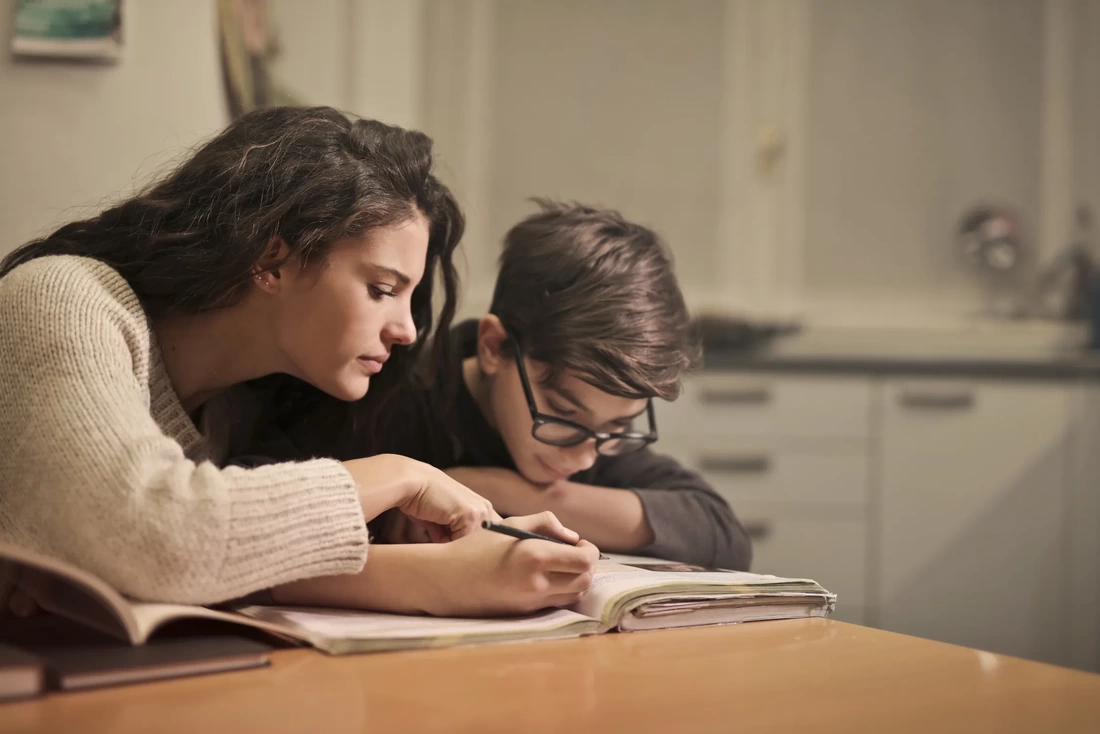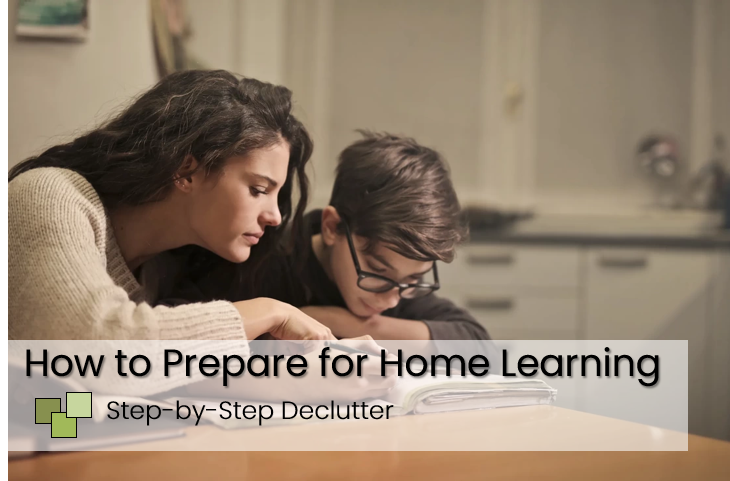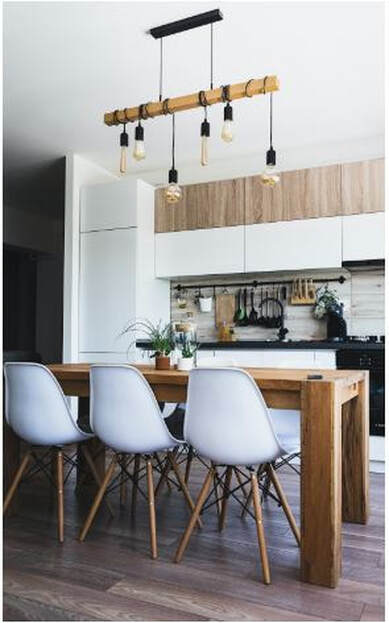|
|
|
As the start of a new school year approaches, many parents are holding their breath, waiting to learn whether or not their school district will resume face to face classes. Some are anxious about sending their kids to school with the COVID-19 virus still raging. Others are anxious at the prospect of having to school their kids from home. No matter where you fall on the spectrum, there's a good chance you're feeling some amount of stress with regard to your kid's schooling. With that in mind, it's a good idea to be ready to oversee your children's education, no matter what the plan is for your school district, as a spike in cases could easily lead to another shut down.
We home-schooled our kids for seven years. Thankfully, homeschooling was an intentional choice for us and not something that was forced upon us suddenly by an unforeseen event beyond our control. That said, it was still a bit overwhelming at first. We learned as we went along, and I look back on the experience with great fondness. For me, homeschooling four kids was a full-time job. These days many families can't afford to have one parent at home full-time. That means managing work demands (possibly from home) in addition to all the other responsibilities you may be juggling. I learned quickly that the more organized I was, the easier it was to stay on top of things. Below you'll find a list of things that I did to get organized for home learning. I hope they will be helpful to you as you take on the added responsibility of overseeing your child's education.
,It's important to have a dedicated space for home learning. Your kids will try to argue otherwise. They will say that they can work just fine sprawled out on the floor, lying on their bed, or in any number of recumbent positions around the house. That may be what they want, but it is not the most ideal posture or place for dedicated mental effort. You may think a desk in their room is a good solution. To a degree it can work in certain circumstances and for certain children, but in my experience it is not the best solution. Children's bedrooms are often filled with distractions which can easily submarine their ability to remain focused and on task. In addition, most school work beyond the early elementary level is done on a tablet or computer these days. These devices are themselves instruments of distraction. It's best to have the kids where you can easily supervise their efforts. That doesn't mean they can't spread out and work in different locations on different assignments, but there should be a space dedicated to 'sit down', supervised work. Since most of us do not have a spare room we can convert into our personal schoolhouse, you will most likely need to designate a space within a space for your learning adventures. The ideal school space will include:
Obviously, the more children you have, the more work and storage space you will need. While you may find it best to separate your kids so they don't distract each other, especially when they are working independently, that won't negate the need for a home school home base.
Your children will have preconceived notions about what school should be like. They will probably also have a conception of home as a place to hang out, play, relax, etc. It may be an uphill battle at first getting them to "do school" at home. One thing you can do to help lessen the friction of the transition is to establish and enforce expectations. I recommend a family council in which you establish these expectations with the help of your children. Consider this basic format for your discussion:
When the kids are home all day every day it can be tempting to just do things when you get around to them, but it's important to establish a schedule and stick to it as best you can. The more regimented your routine, the more likely your kids will adapt to it favorably. One of the up sides of doing school at home is that you can create a schedule that works best for you and your family. In our family, that meant starting school each day at 9:00 am. There was no need to start earlier, and waiting until 9:00 gave me time to have a personal devotional, exercise, shower, fix a good breakfast for everyone, and clean up the breakfast dishes - all things I knew would be important for my personal sanity. It also meant I never had to wake my kids up for school. They could sleep as long as they needed to and still be ready in plenty of time for the start of the school day. As you prepare a school schedule for home learning, think about what matters most to you and your family. Include regular breaks for you and your kids. Think about when you and they are at your best and schedule the most rigorous part of the learning day to coincide. Are your kids fresh and raring to go first thing but sluggish after lunch? Or do they take a while to get going in the morning? In our case, we focused on core subjects and seated work before lunch and left the afternoon for hands on, project oriented subjects like science, art, and social studies. Another bonus of homeschooling is that it often does not take as large a chunk of the day as traditional classroom learning. Transitions are swifter, instructions tend to be less tedious, and kids can work at their own pace.
If you are working from home or outside the home, that will obviously impact your availability to oversee your children's' learning. Talk to your boss about adjusting your schedule if needed. Chances are he or she may be knee deep in supervising home learning as well and thus understand. Perhaps you could go in later or get off earlier or some combination of the two. If you're working from home, see if you can schedule your work hours outside the time frame when your kids are most focused and cooperative.
I don't have to tell you that you need a break, but you may need a reminder that it's OK to take one. Not only is it OK, it's essential. When your kids are home all day every day, you need a break from each other. They need time to pursue their own interests, and you need time to recharge and 'get things done'. Whether you are working while homeschooling or homeschooling full time (still a difficult job), you need to find time every day for you - time to put your feet up and do something you enjoy, if only for a few minutes. Doing so will add to your success and well-being.
Having kids home all the time means the house gets even messier. Homeschooling is a great opportunity to teach your kids some life skills and responsibility. When we made the decision to homeschool our kids, we made the decision to put them to work. They had chore charts with simple jobs before we began, but once we started homeschooling those things became a part of our curriculum. We started by identifying skills we wanted them to develop and determining what jobs were most realistic for each of our kids based on their ages. Then we started a concerted campaign to teach them to work.
One of the things that intimidates many parents when in comes to homeschooling is their own sense of inadequacy in one or more subject areas. These days parents have an abundance of excellent educational resources at their fingertips to help lesson the teaching burden and enhance learning for their children. Here are just a few examples of the kinds of resources you can harness as a home educator:
Another excellent way to make use of technology for learning is through utilizing family and friends. This can be done in person or virtually through video conferencing applications like Zoom or Cisco . If you're not great at science or math or some other subject, think about friends, neighbors, and members of your extended family who may excel in areas where you struggle. Then recruit them to work with your child in their area of expertise. Chances are they would love to help, especially if they don't have kids at home. Another option is to trade teaching with friends. When we were homeschooling, I taught a basic core curriculum to a family of refugees preparing to immigrate to an English speaking country and the father, who was a microbiologist and fluent English speaker, taught biology to my high schooler with enthusiasm and gusto. It was a great trade!
If homeschooling is being thrust upon you, it can be tempting to dwell on the down side of the situation, but there are many potential benefits of homeschooling. These include:
Whatever your personal educational choice for your children may be, I hope this has given you the confidence to trust yourself should you be called upon to take charge of your child's learning. I believe in your ability to succeed! I also believe that homeschooling can be a blessing for both parents and children.
18 Comments
This post contains affiliate links. Read my full disclosure here. Mounting evidence suggests that clutter can have a significantly negative impact on your mental and physical health. Studies show that those who live in a messy household with lots of clutter have higher levels of cortisol (a stress hormone) in their bodies than those who live in an organized space. While cortisol serves an important function in helping the body respond to imminent danger, overexposure to this hormone, resulting from extended periods of stress, can have serious mental and physical health implications. In addition to taking an emotional toll, prolonged stress can affect brain function in a variety of negative ways and lead to serious health problems such as high blood pressure, heart disease, obesity, and diabetes. The Relationship Between Clutter and StressThere are many ways in which clutter contributes to stress. These can be conscious or unconscious, so even if you don't think your clutter is impacting you, research suggests otherwise. A cluttered environment is distracting. Visual clutter saps our attention and impedes our ability to focus. In addition, an untidy space fosters a sense of guilt and unease. This is because our brains register clutter as a myriad of unfinished tasks, making it difficult to relax. Reduce Your Clutter and Reduce Your StressFortunately, there is much that can be done to reduce the impact of visual clutter in our lives from employing effective decluttering techniques to implementing various interior design strategies. Here are six ways to optimize the beauty of your home while simultaneously reducing visual clutter. Hang Mirrors Small spaces often feel cluttered, even if they aren't. Adding visual depth to a space can help negate this impression. In addition to their practical and decorative uses, mirrors create an illusion of space. Hanging mirrors in strategic places can help to reduce visual clutter. If the room containing a mirror is kept tidy, the aura of peace and calm is enhanced significantly. As an added benefit, mirrors also reflect natural light into a room, giving it a warm glow and making it feel more spacious and inviting. Select Right-sized Furniture for Your Space Having the right furniture to suit a room can help significantly with decreasing visual clutter. The size and placement of furniture are both important factors. A large overstuffed sofa or furniture suite will dwarf a small living room. A small bedroom will look cramped with a bulky bed frame and dressers. A heavy, chunky kitchen or dining room table will contribute significantly to visual clutter in all but the most spacious of rooms. To increase the perceived size of a room, opt for right-sized furniture pieces and arrange the furniture in ways that utilize the space and increase it's functionality and flow. Avoid blocking windows and walkways. Leave visual space around the pieces. All this can increase the perceived size of the room and reduces visual clutter. Choose Curtains Carefully Believe it or not, the type, style, and position of curtains can add significantly to a room's visual clutter. Heavy, dark curtains made from thick fabrics tend to add 'weight' to a space. While this is desirable in some settings, more often than not, it clutters the space by making it feel dark and closed in. Likewise, brightly colored, elaborately designed curtains can be distracting and increase the sense of clutter in a space. Poorly positioned curtains are equally burdensome to a space. A common practice is to hang curtains just above the windows, but this is a mistake. Doing so actually makes the ceiling appear shorter and the windows seem smaller. The good news is the solutions to these problems are simple. Try light-weight curtains in light, simply patterned fabrics and reposition your curtain rods. Buy new curtain rods online and hang them six inches to one foot above the top of the window. This will make your windows appear larger and your ceiling look higher. This space optimization reduces visual clutter and enhances the vibe of the room. Use Clear Containers in Your Kitchen A decluttering technique that adds rustic charm and character to your kitchen is to remove labels on advertisement-laden packaging and place the contents of certain products into clear containers. Alternatively, wooden or plain colored containers may suit the design of your kitchen a little more. Having a kitchen filled with attractive, clear storage containers rather than distracting boxes and packaging greatly reduces visual clutter and enhances the appearance of your kitchen. Clear Bathroom Countertops Bathroom countertops are notorious for collecting clutter. While it is convenient to keep grooming products close at hand, it doesn't take many to leave the space feeling overcrowded and messy. Try to keep countertops clear by maximizing under counter storage and drawer space. Consider adding shelving where attractive baskets and bins can conceal clutter while still keeping it easily accessible. Preserve Table Space
Clutter has a way of collecting on flat surfaces, but tables are not meant to be storage spaces. A cluttered surface not only looks messy, it makes using the item as it was intended frustrating, if not impossible. The temptation to pile papers and other things onto table and counter tops is real, but a little planning can alleviate the problem. Typically things that end up piled on the table are there because they do not have a permanent home or they need to be dealt with. Evaluate the kinds of items that tend to accumulate on your flat surfaces and establish a place for them to live. A wall-mounted mail sorter is great for organizing papers that require action. You might also look for a console table with drawers and a shelf underneath for storing other items you want easy access to out of sight. With a few simple tweaks, you can significantly impact the weight of visual clutter in your home. Try implementing these suggestions. This is a collaborative post. Read my full disclosure here.
With the arrival of summer and the lifting of restrictions across the country, many Americans are making travel plans, myself among them (I've got a new granddaughter in Montana whom I am dying to meet). While it is a relief to most of the population to have the freedom to travel, doing so during an ongoing pandemic requires careful planning and consideration in order to ensure your safety and that of others.
I tend to be a careful planner anyway, but this week as we mapped out our route and made other preparations, I felt a need to be even more detailed in my efforts. I learned some things in the process. I hope you'll find my lessons useful as you plan your own road trip.
Restrictions
It's always helpful to do a little research before traveling cross-country, but it's absolutely essential at the moment. All fifty states are in some phase of reopening, and every state has different guidelines and a different timeline. What's more, some states are readjusting their proposed timelines in the midst of a resurgence in COVID-19 cases. I highly recommend researching the reopening plans for each state you'll be visiting/driving through. You'll want to pay particular attention to the guidelines at your final destination as some states/communities are still requiring out-of-state travelers to self-quarantine for 14 days upon arrival. The following resources are helpful in determining the current restrictions for a given state. Both of these sites are updated regularly.
Safety
Another important topic to research when planning travel within the United States is how to keep yourself, your family, and others safe and healthy. I recommend the following resources for travelers from the Centers for Disease Control (CDC):
Route - Rest Areas
As a traveler I have a knack for pulling off at a less-than-desirable location for an emergency bathroom break only to get back in the car and discover a rest stop three miles down the road. While it may be fine to wing it under normal circumstances, I recommend carefully mapping your travel route so long as there's a pandemic going on. At the very least, it's good to get a feel for where the rest stops are located and identify good places to stop for food and/or gas. You obviously can't control your need to stop entirely, but it's good to know your options. Having just traveled from Kansas to Tennessee (another new grandbaby), I can tell you that there are a wide range of standards in play with regard to sanitation and patron safety. Rest areas are a nice option (if you don't need gas or food) because there tend to be fewer people around, and there is plenty of open, outdoor space to social distance while stretching your legs and getting some fresh air.
Food
I recommend packing at least some food in order to reduce the number of interactions you need to have while on the road. While most restaurants are now open (assuming they survived the shut down), many are only offering drive through or pick up services - even in states that are fully 'open'. I'm not a huge fan of eating and driving at the same time (or sitting in the car and eating), so I tend to look for places that offer outdoor seating. If we know there is a rest area not far from where we're stopping, we might pick up food and take it to the rest stop for a picnic as well. If you're staying in a hotel, ordering in or picking up food to take back to your room may be your best (or only) option.
Lodging
When it comes to lodging, I recommend choosing a nation-wide hotel chain and sticking with them for a couple of reasons. The first is the potential for earning rewards. We once rented two beautiful, spacious suites on the coast of the Indian Ocean in Oman for three nights for free by cashing in our Marriott rewards points. The other reason for choosing a chain that you like and trust is quality. It can be difficult to sleep well when you're on the road. Finding a place where you're consistently comfortable can greatly enhance your travel experience. What's more, large hotel chains are much more likely to have well thought-out, company-wide regulations and procedures in place for things like sanitizing and ensuring guest safety.
Attractions
One of my favorite things about road trips is visiting new and interesting places along the route. If you're traveling across the United States, you're in for a treat as there are hundreds (if not thousands) of amazing sites to see - everything from the weird and quirky to the majestic and awe-inspiring. The best way to ensure you don't miss any hidden treasures is to do some research. A simple way to research attractions is to do an internet search for the highway you'll be traveling (i.e. roadside attractions I-90). You can also go to any of the major travel booking sites (Expedia, Travelocity, etc.), click on their "Things To Do" tab, and enter a city you'll be visiting. Another option is simply to search "things to do in (enter name of city)". You can also check out the list of resources in the box below.
Looking for stuff to do on your next road trip? Try some of these resources.
In doing the research for our upcoming cross-country trip, I discovered some things with regard to attractions that I hope you will find helpful in planning your own trip.
Once you've done your research, determined the route you'll be taking, planned your stops, and decided on any activities you want to pursue, it's time to solidify your plan. I highly recommend creating a travel folder or binder for keeping track of all the information pertaining to your trip. Your folder could include:
Driving for hours on end can be an adventure. It can also be incredibly dull and surprisingly tiring. One of the downsides of boredom is that your eyes can get heavy. If you're the driver, this is obviously a problem. Another downside is that one tends to get snacky which can lead to overeating (which can also make you drowsy!). These problems can be reduced with a little planning.
To combat boredom, hubby and I like to listen to lectures from The Great Courses. I highly recommend their streaming service. We also enjoy listening to podcasts or audiobooks, or reading aloud to one another as we travel. When our kids were younger we played a lot of car games. as well
To curb overeating, try packing some healthy snacks and/or scheduling your eating.
Click on the image below to download my Road Trip Daily Planner page.
It can be difficult planning a road trip at a time like this, but it can also be hard to abandon summer plans, especially after spending several months cooped up at home. With a little research and planning it's possible to keep yourself and others safe while on the road.
Please note that I am not, in any way, advocating for irresponsible behavior during this ongoing pandemic. Quite the opposite. My hope is to help people with travel plans (either essential or non-essential) to be informed in order to make choices that will keep everyone safe. I urge you to be considerate of others, follow proper hygiene procedures, practice social distancing, and respect the ordinances put in place to protect the public in whatever state you may be traveling through.
Do you have a road trip planned this summer? If so, I invite you to share any additional tips you may have for staying safe and enjoying the road in the comments section below.
The kitchen is the heart of the home. It's a place for cooking, eating, studying, entertaining, and congregating. Given the amount of time we spend in our kitchens, having a kitchen you love is a real plus. Unfortunately, for many of us that is not the case.
Giving your kitchen a makeover is a great way to fall in love with it. A new kitchen can make your home more modern, more spacious, and more uniquely yours. The one downside to a new kitchen is the cost. Kitchen renovations are expensive. The good news is, you don't have to install a brand new kitchen to create a refreshing new look that you love. There are a lot of clever ways to upgrade your kitchen without having to spend a fortune. Take a look at these low-cost ideas for refreshing your kitchen.
You don’t have to completely replace your cabinets to give them a fresh look. Painting or wrapping your cabinets is an easy way to fix tired or dated units, and can be a quick fix while you save up for new ones.
The color or pattern of your cabinets can easily be changed. Many people use special cabinet paint or vinyl wraps to transform their kitchen units - you can do it too! This video shows you just how easy it is:
Take a long hard look at your sink and faucet - are they scratched, stained, or outdated? Maybe you never liked them to begin with? A new sink and/or faucet can really transform the look of a kitchen. Allora USA has some fantastic choices to help you give your kitchen a makeover. It’s amazing the difference one small change can make!
Upgrading your hardware can completely change the look of your cabinets. It's a simple, cost-effective way to add style and personality to your kitchen. Matte finishes look sophisticated and expensive but are actually quite affordable. You can install them yourself for a simple, instant upgrade.
Tiles are a great way to bring some life into your kitchen. Tile backsplashes are great because they're easy to clean and care for. The downside is, they can start to look dated and stained over time. One simple solution is tile paint.
Tile paint can give your tiles a new lease of life, making them look brand new. You can choose a color or pattern that suits your taste and enjoy an inexpensive DIY kitchen hack.
If you want to make one update to your kitchen without changing everything, some fresh new flooring can really transform the look. There are all kinds of kitchen flooring ideas you can try, including vinyl, laminate, wood and tiles - each helping to create a unique look in your home. If you choose to install your flooring yourself, you can save even more money, making for a simple but effective kitchen upgrade.
It’s surprising what a little DIY can do to update your home. With some simple makeover ideas, you can make easy and affordable changes that will make your kitchen feel like new again. Got some free time this weekend? Why not give your kitchen a brand new look?
This is a collaborative post. Read my full disclosure here.
|
Archives
November 2022
Categories
All
|
Proudly powered by Weebly




















 RSS Feed
RSS Feed